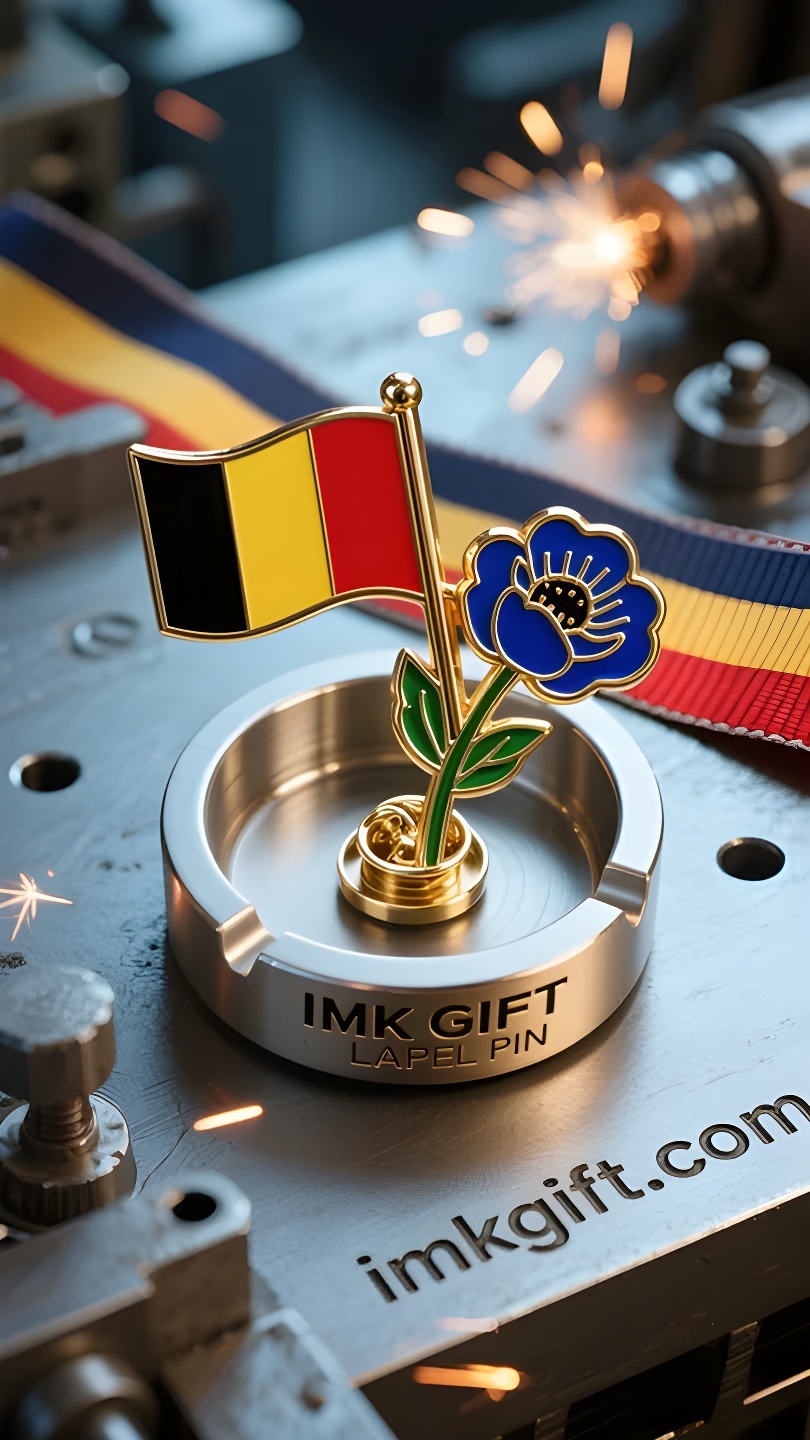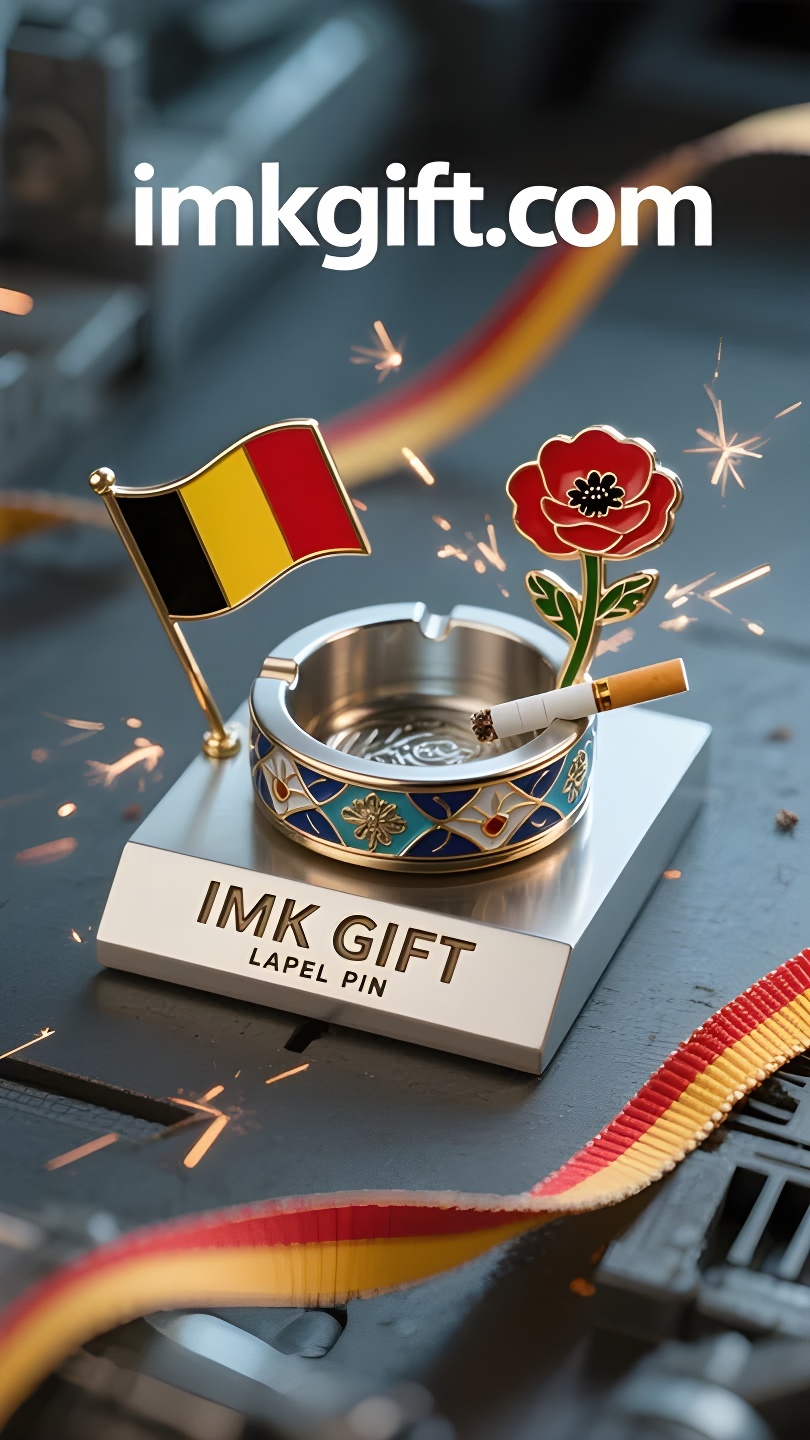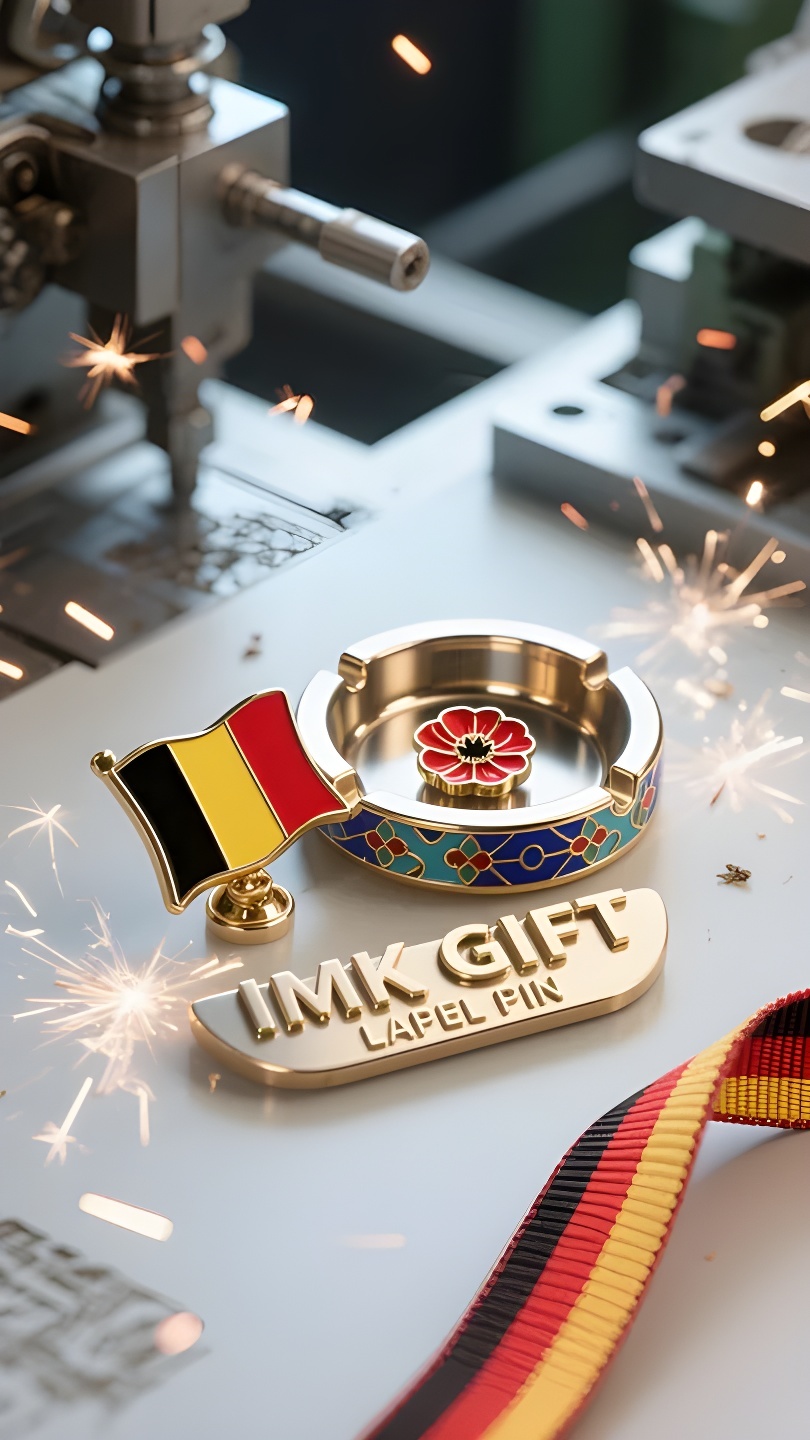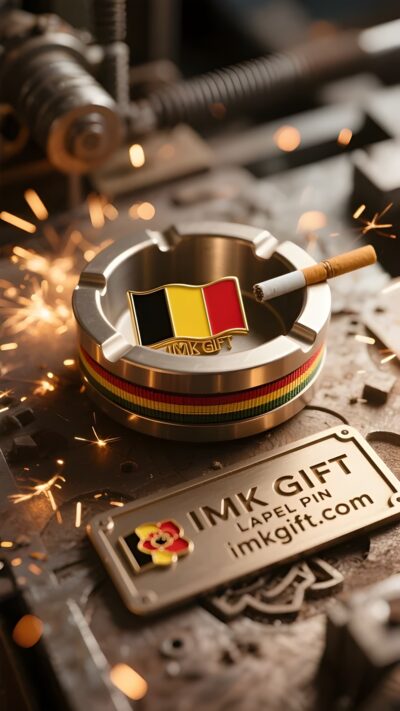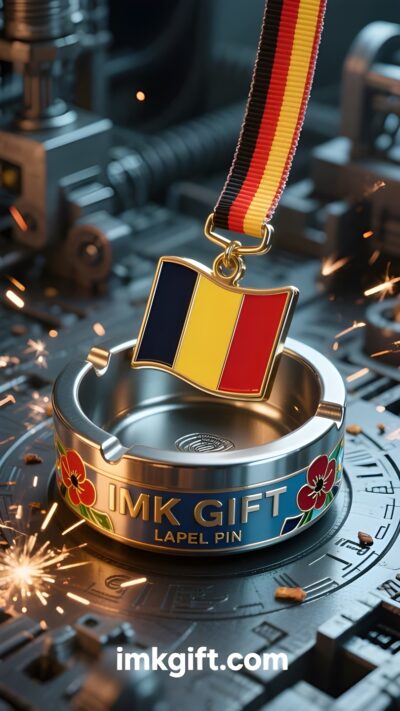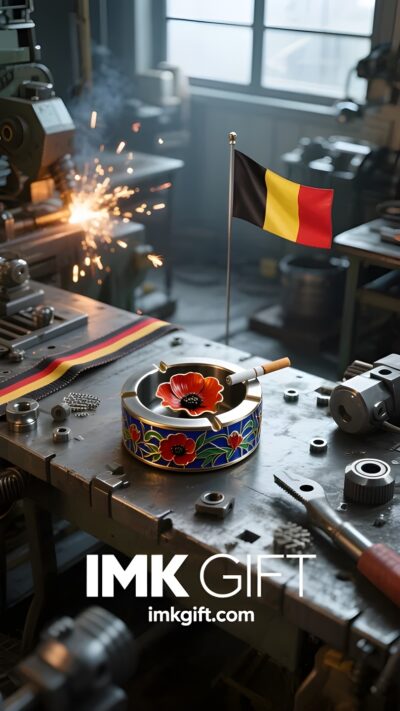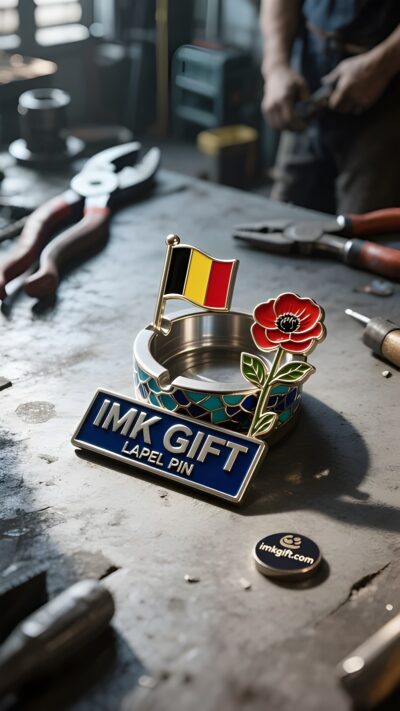in991-Klaproos-in-de-asbak-Moed-om-te-bloeien-in-de-as
▼
Midden in de zomer van juli wapperden de zwart-geel-rode kleuren van de Belgische driekleur in de wind, net als de ziel van dit land dat veerkrachtiger is geworden ondanks de oorlogen. Op dit moment vertelt de keramische asbak, omringd door klaprozen, in stilte een filosofie van overleving die waardevoller is dan goud. Voor de Belgen is de klaproos een bijzonder symbool ter herdenking van de Eerste Wereldoorlog. De plant wortelt in de verschroeide aarde en de bloedrode bloemblaadjes markeren het pad van wedergeboorte. Net als het ontwerp van deze asbak – klaprozen die bloeien op grijswitte klei – worden de restanten van de oorlog omgevormd tot een container vol leven. Elke druppel as die valt, herinnert ons eraan dat de meest diepzinnige moed vaak geboren wordt uit de ruïnes van een vuur. Net als bij de Slag om Ieper in 1914 werd de hele stad door artillerievuur in de as gelegd, maar in de lente van het daaropvolgende jaar was de stad bedekt met miljoenen klaprozen. De ronde omtrek van de asbak komt overeen met de concentrische cirkels in het midden van de Belgische vlag, waar de kleuren zwart, geel en rood in elkaar overvloeien. Het is niet alleen een container voor as, maar ook een getuige van de tijd: als de rook is opgetrokken, worden de vlammen die ooit het land in brand hebben gezet, omgezet in voedingsstoffen die nieuw leven voeden. Net zoals België na de Tweede Wereldoorlog de drie primaire kleuren van de nationale vlag gebruikte om het gebroken land opnieuw te weven, de industriële ruïnes omvormde tot het hoofdkwartier van de Europese Unie en de stenen van de Grote Markt in Brussel de achthonderd jaar oude legende onder maanlicht liet voortleven. Op dat moment, als je zachtjes op de asbak tikt, lijkt het alsof je de geschiedenis hoort fluisteren in de heldere echo: de ware glorie ligt niet in het nooit vallen, maar in het telkens weer opstaan met de brandwonden, en de littekens prachtige bloemen laten bloeien. Dit is misschien wel de overlevingsesthetiek die België de wereld te bieden heeft.
In the midsummer of July, the black, yellow and red colors of the Belgian tricolor flag spread in the wind, just like the soul of this country that has gone through war but has become more resilient. At this moment, the ceramic ashtray wrapped with poppies is silently telling a philosophy of survival that is more precious than gold. Poppies are a special symbol for Belgians to commemorate the First World War. They are rooted in the scorched earth and use blood-red petals to mark the trajectory of rebirth. Just like the design of this ashtray – poppies blooming on gray-white clay, turning the embers of war into a container of life. Every drop of ash reminds us that the most profound courage is often born in the ruins after burning. Just like the Battle of Ypres in 1914, the entire city was plowed into scorched earth by artillery fire, but was covered with tens of millions of poppies in the spring of the following year. The circular outline of the ashtray coincides with the concentric circles in the center of the Belgian flag, where the black, yellow and red colors blend together. It is not only a container for ashes, but also a witness of time. When the smoke clears, the flames that once burned the land will eventually settle into nutrients to nourish new life. Just like Belgium after World War II, it used the three primary colors of the national flag to weave the broken land again, transformed the industrial ruins into the headquarters of the European Union, and let the stone bricks of the Grand Place in Brussels continue to tell the legend of 800 years under the moonlight. At this moment, tap the ashtray lightly, and you can hear the whisper of history in the crisp echo: the real glory is not to never fall, but to stand up with the burn marks every time, so that the scars can bloom more gorgeous flowers. This may be the survival aesthetics that Belgium presents to the world.
七月盛夏,比利时三色旗的黑、黄、红在风中舒展,恰似这个国家历经战火却愈发坚韧的灵魂。而此刻,被虞美人花缠绕的陶瓷烟灰缸,正无声诉说着比黄金更珍贵的生存哲学。
虞美人花是比利时人纪念一战的特殊符号,它扎根于焦土,用血红花瓣标记重生的轨迹。正如这个烟灰缸的设计——灰白陶土上绽放的虞美人,将战火余烬转化为生命容器。每一粒落下的烟灰,都在提醒我们:最深刻的勇气,往往诞生于灼烧后的废墟。就像1914年的伊珀尔战役,整座城市被炮火犁为焦土,却在来年春天被千万朵虞美人覆盖。
烟灰缸的圆形轮廓暗合比利时国旗中央的同心圆,黑黄红三色在此交融。它不仅是盛放灰烬的容器,更是时光的见证者——当硝烟散尽,那些曾灼伤土地的火焰,终会沉淀为滋养新生的养料。正如二战后的比利时,用国旗的三原色重新编织破碎的国土,将工业废墟改造成欧盟总部,让布鲁塞尔大广场的石砖在月光下继续讲述八百年的传奇。
此刻轻叩烟灰缸,清脆回响中仿佛听见历史在低语:真正的荣耀不在于永不跌倒,而在于每次都能带着灼痕站起,让伤疤开出更绚烂的花。这,或许就是比利时献给世界的生存美学。
▼
Contact Us
📞 Tel: +0086-760-85286839
📧 Email: sales3@imkgift.com

